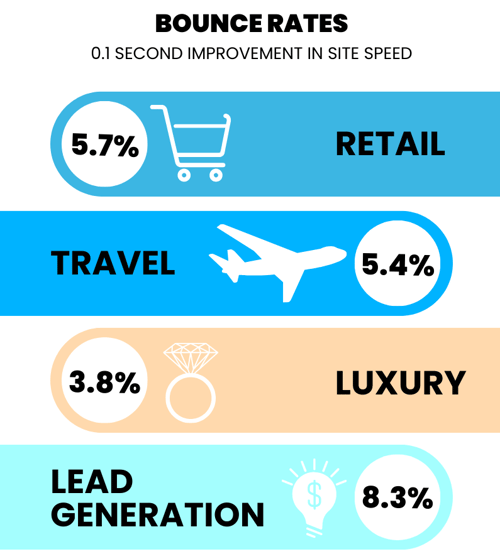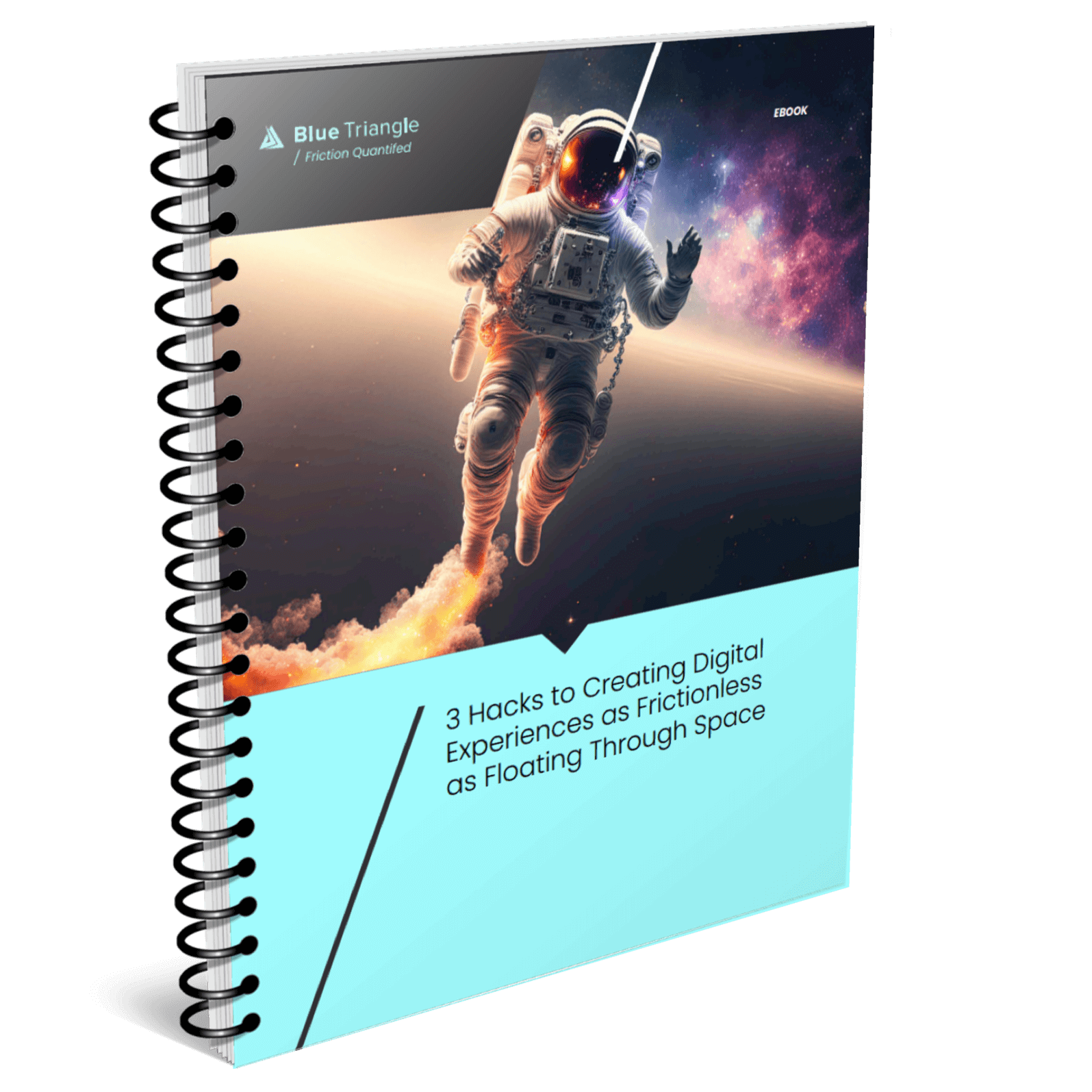Can milliseconds really cost you millions?
Yes, they can.
It’s no secret that consumers expect frictionless, remarkable digital experiences.
Especially with more customers shopping online. Shockingly, 62% of adults performed their first online transaction during the pandemic. Since then, online and mobile usage continues to rise.
These digital customers don’t have the patience to put up with site friction. They’ll abandon your site. And might not come back. Instead, they’ll finish their purchase or transaction with one of your competitors.
61% of customers have stopped buying from a company because a competitor provided a better experience.
So “going frictionless” has completely changed how brands compete for customer trust and loyalty. And brands are no longer only competing with the best experience in their category.
Consumer expectations for a frictionless experience have been set by Amazon. For many, it's the best digital experience they've ever received.
Your customers are not only comparing your brand's experience against your direct competitors. But rather comparing against their best, frictionless experience. That "Amazonian" experience.
Whether on a retail app or even a banking or travel site, consumers expect their digital experience to be as fast, easy, and personalized as their Amazon experience.
Research confirms friction results in revenue loss.
We’ve analyzed thousands of sites and billions of data points. And the data is conclusive.
Site speed directly impacts the customer experience and your bottom line.
But don’t just take our word for it.
Deloitte conducted an entire study focused on the correlation between site speed and revenue.
Site speed is one of the most important factors to consider for organizations that want to optimize the digital customer experience and drive business results.
Imagine a delay of just 1 second caused by site friction. If this results in a 7% reduction in conversions, for a site generating $100K per day, then friction could be costing an astounding $2.5 million annually.
This scenario isn't just a hypothetical. Here are 5 real ways a frictionless digital experience impacts your revenue, conversions, and other business KPIs.
5 financial benefits of a frictionless digital experience.
1. Increased conversion rates
A fast, reliable site can lead to increased conversion rates. Because users are more likely to stay on the site if they don’t encounter costly friction. And also more likely to complete a desired action, like finishing a purchase or submitting a form.
Deloitte found dramatic improvement in conversion rates (more than 10% in some cases) when site speed was improved 0.1 seconds across multiple categories.

2. Greater Average Order Value (AOV)
A frictionless user experience can increase customer satisfaction and lead to repeat business. This will also result in a greater average order value per visit.
In the Deloitte study, average order value increased by nearly 10% in some categories.

Satisfied customers are also more likely to have a higher lifetime value.
Customer who received a frictionless experience are also more likely to recommend your business to others. 72% of customers say they share good experiences, while 62% say they share bad experiences with others.
3. Lower bounce rates
When site visitors encounter less friction, such as slow loading time, they are less likely to leave the site and go to a competitor. Which means lower bounce rates.
In the Deloitte study, bounce rates consistently improved on product pages for retail, travel, and luxury brands. Companies focused on lead generation saw the best bounce rate improvement on their informational pages. More than 8%.

4. Reduced cart abandonment rates
Visitors are less likely to abandon their shopping carts, for example, if friction causing a complicated checkout processes or slow loading time is removed.
Google’s user performance data has found that 53% of mobile site visitors will leave a site if it doesn't load within 3 seconds. This is especially true for retailers, where it's much easier to abandon and buy from a competitor, such as Amazon.
Even though Amazon has defined what it means to be frictionless, they're not infallible. Learn how much an Amazon outage in December 2022 cost them. It’s shocking.
5. Better search engine ranking
Google considers Core Web Vitals, which measure a site's loading speed, interactivity, and visual stability, as important ranking signals.So, sites with healthy Core Web Vitals are likely to rank higher in search results, leading to increased organic traffic and visibility.
In a study of just one of the Core Web Vitals, it was found that product pages could see 40% to 50% lower conversion rates when comparing users that experience a 2-second LCP vs. a 4 to 5-second LCP.
The Power of Adopting a Continuous Experience Optimization (CEO) Culture.
.png?width=495&height=275&name=3%20Hacks%20eBook%20Tag%20Blog%20Post%20-%20CTA%20(2).png) With all these financial benefits, no wonder removing friction to improve site speed is a top priority for performance-driven, digitally focused companies.
With all these financial benefits, no wonder removing friction to improve site speed is a top priority for performance-driven, digitally focused companies.
Every team (Engineering & Product, Marketing & Digital, and even IT) should know how their customers’ sensitivity to site friction affects their KPIs and understand the powerful impact of making small, ongoing improvements to the customer experience.
That’s the whole idea behind companies adopting a culture focused on achieving Continuous Experience Optimization (CEO).
CEO is the process of collecting customer journey behavior and site performance data and using that information to make informed decisions about how to continually optimize the digital experience.
It’s a data-driven, iterative approach to making ongoing improvements that remove friction from the digital experience. And as the data from the Deloitte study shows, a frictionless digital experience can:
- Increase revenue
- Boost conversions
- Build customer trust and loyalty

During the holiday rush, every shopper matters
Optimize the customer journey before the eCommerce event of the year.


